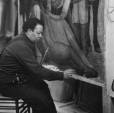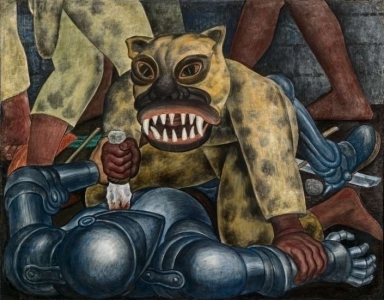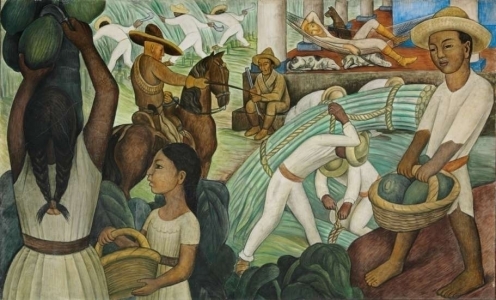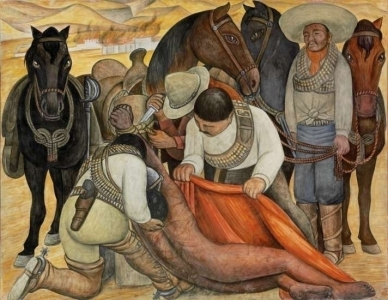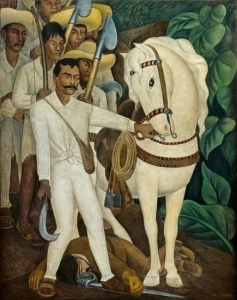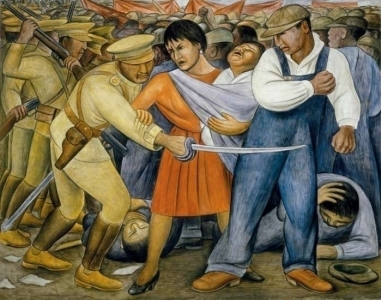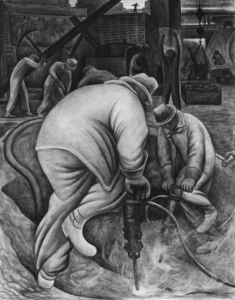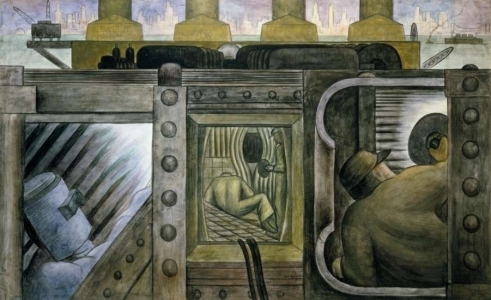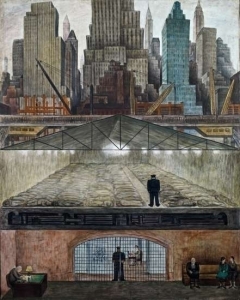dieser beitrag wurde verfasst in: englisch (eng/en)
künstler: Diego Rivera
titel: Eight portable mural panels: Indian Warrior. Sugar Cane. Liberation of the Peon. Agrarian Leader Zapata. The Uprising. Pneumatic Drilling. Electric Power. Frozen Assets
jahr: 1931–32
adresse: The Museum of Modern Art, Heckscher Building, 730 5th ave / 57th st, New York City
+: Diego Rivera was the subject of MoMA’s second monographic exhibition (the first was Henri Matisse), which set new attendance records in its five-week run from December 22, 1931, to January 27, 1932. MoMA brought Rivera to New York six weeks before the exhibition’s opening and gave him studio space within the Museum, a strategy intended to solve the problem of how to present the work of this famous muralist when murals were by definition made and fixed on site. Working around the clock with two assistants, Rivera produced five “portable murals”—large blocks of frescoed plaster, slaked lime, and wood that feature bold images drawn from Mexican subject matter and address themes of revolution and class inequity. After the opening, to great publicity, Rivera added three more murals, now taking on New York subjects through monumental images of the urban working class and the social stratification of the city during the Great Depression. All eight were on display for the rest of the show’s run. The first of these panels, Agrarian Leader Zapata, is an icon in the Museum’s collection.
The murals, which are up to six feet by eight feet in size and weigh as much as 1,000 pounds, are made of frescoed plaster, concrete, and steel. Comprising five of the eight murals that were shown in the 1931 exhibition, they are drawn from public and private collections in the United States and Mexico, including MoMA’s own collection.
